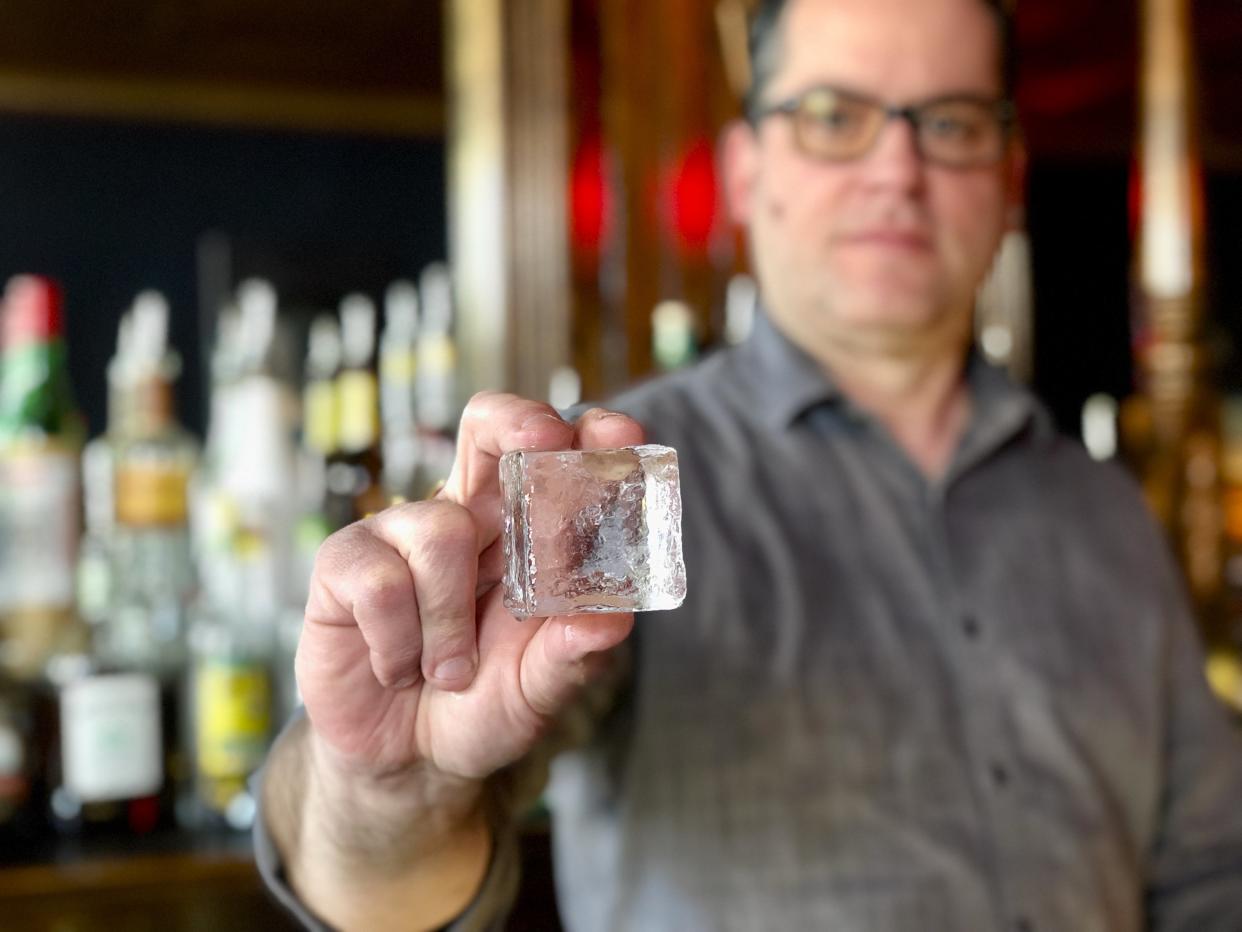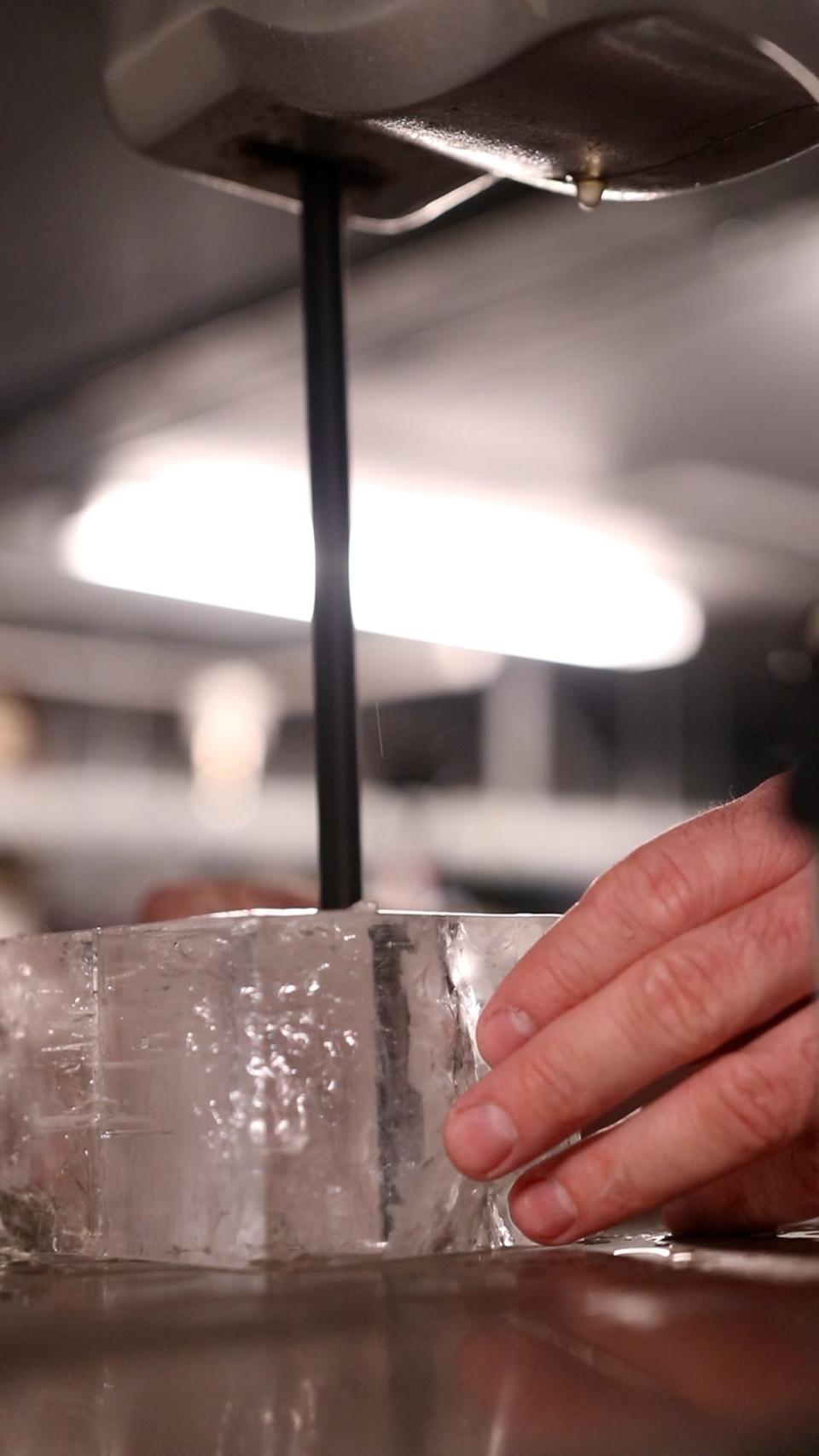In balancing, elevating cocktails, ice needs more due

Drinkers have to start recognizing ice as the unsung hero of a cocktail.
If ice had need for an obituary, among all its critical uses, its importance to cocktails would receive a single line, perhaps something dull like “was mixed with liquor.”
Cocktail bars, though, take great care in thinking about ice – how best to prepare it, to use it, to present it. They know not to treat ice as a boilerplate element but rather as an equalizer, performance prop and set piece.
“On multiple levels, ice can really shape an experience at a cocktail bar,” said Luke Doherty, the bar manager at Hudson’s speakeasy Less Than Greater Than.
The first mention of the word "cocktail" appeared over 200 years ago in a New York newspaper, in an article that called it a mix of “a stimulating liquor, composed of spirits of any kind, sugar, water and bitters.”
Water, as in ice.
“Everything grew from that (definition),” Doherty told me in a recent phone interview. “No matter what, water is going to be an integral part of the cocktail. The addition of water opens spirits up; good-quality ice is largely the water component you’re adding. You want to control dilution, though, and different types of ice give you different rates of dilution.”
For Less Than Greater Than, as for most cocktail bars, small pieces of ice – prepared with filtered water for shaking or stirring – represent the workhorse. This ice, we never see, as bartenders drop or crack it into their mixing glasses and shakers and strain out the resulting concoction.
Then you have your crushed or pebbled ice, best used in Tiki-style drinks with lots of fruits and syrups. We have this ice presented to us in elaborate ceramic glasses or slender, elegant ones.
Finally, the speakeasy has its showpieces - the big, crystal-clear blocks of ice, run through a table saw and shaped for spirit-forward cocktails like an Old-Fashioned.
We’re meant to gawk at this ice, these beautifully transparent squares, rectangles or spheres.
'Wow factor'
“People consume with their eyes first,” Doherty said. “You put an Old-Fashioned for someone down over a perfectly clear cube, there’s a wow factor.”
There exists an entire industry around making and distributing clear cocktail ice, from large manufactures to fridges to household molds for your freezer.
Bartenders get that crystalline ice by mimicking how a lake freezes over, which sounds more complicated than the method Less Than Greater Than employs.
“We rip the tops off Coleman coolers and put them in our walk-in freezers,” Doherty said.

The cooler forces the water to freeze in one direction, top to bottom, which pushes any air and impurities down. Once you cut off the layer of cloudy ice below, you’re left with a beautifully translucent block.
Ice prep is a weekly job at Less Than Greater Than, as necessary as whipping up syrups or juicing fruit. And one block is usually good for up to 100 cubes.
At Steel & Wire Cocktail Lounge on Millbury Street in Worcester, co-owner Frank Inangelo uses smaller coolers with molds, created by the Los Angeles-based Ghost Ice, to harvest his crystal cubes. The neighborhood bar, which kept Nick’s jazzy bones intact, celebrates its one-year anniversary this month.
Inangelo, tending bar on a recent Thursday evening, tells me he briefly dealt with what his wife and co-owner, Mara, termed an obsession with creating clear ice.
The pandemic forced Inangelo out of a job for the first time since junior high. After 23 years as a professional bartender and bar manager, all of them spent at Vincent’s at 49 Suffolk St., he became one of us, the exploratory, sometimes clueless home mixologist.
In pursuit of clarity
“I would start making drinks at home and posting pictures. Somebody got me the ice molds – the cube and the sphere. I could never figure out how to get them clear, though,” he told me. “I was up one night and I looked up YouTube videos. It became – I don’t want to say an obsession – a fun project to kill time. Of course my wife would say otherwise.”
Following the aha moment, in his kitchen with a medium-sized block of clear ice and a bread knife to cut it up, he said, “I went and told Mara, ‘I did it. I did it.’ She looked up for a second then went on with her work.”
Their patrons sometimes have the same reaction when he places down a Negroni chilled with a pristine cube. Ice, you see, is easy to overlook.
But more often than not, they’re impressed. While not absolutely necessary, the clear ice shows a bar has chosen a level of polish that justifies your time and money.
“When you’re in a bar, paying $12 or $14 for a cocktail, you want something besides the drink, because you can go anywhere to get a Jack and Coke or vodka and soda,” Inangelo said.
Now ice is the first thing I notice when I order a cocktail, not the garnishes or the glass or the little smoke-filled chest it may arrive in.
The ice in your glass can tell you a lot about your drink, but it can say even more about the establishment.
This article originally appeared on Telegram & Gazette: In balancing, elevating cocktails, ice needs more due

